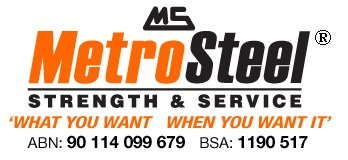Have you ever visited a large warehouse, building, or facility and noticed those large steel beams that span the ceilings and walls? Those are known as Z sections! Incidentally, although when you look at them end on, these sections do take on the appearance of a ‘Z’ shape, some argue that they’re so called because The term ‘Z section’ comes from ‘Z axis’ (an algebraic geometry term which defines the collective values of a group of independent supporting variables).
While this type of knowledge might appear impressive to your friends or family at a local quiz night, all you really need to know is that Z sections are most commonly used for building support in the construction, manufacturing, and transportation industries.
They’re typically seen in constructions such as:
- Mezzanine flooring
- Garage doors
- Metal buildings
- Racking
- Large storage bins
- Fencing
And while some form the bones of a facility (roofing and walls), others like those listed above are used to strengthen structures within. As such, every section needs a seamless fabrication process for optimum performance, ductility, and strength. This is where roll forming comes in!
So what exactly is roll forming and why use it for this process?
Roll forming is the ideal fabrication process for creating metal sections such as wall girts and roof purlins. Why? Simply because it enables secondary processing needs such as stamping and punching and, in the case of wall girts, allows for cut slits or holes along the entire length of a beam, without weakening the piece.
In essence, roll forming is the process which allows an entire sheet of metal to be progressively shaped through a series of bending operations via one or several fabricating machines. This could be either through:
- Cold rolling – using coiled metal sheeting, or
- Hot rolling – utilising thick or thin metal bars known as blooms or billets.
It’s the hot rolling process which is used to produce many of the structural Z section posts and beams that we see in everyday buildings.
How do I know my wall girts from my roof purlins?
Before you say that one is used to support the roof and the other to support the wall, you might want to consider that each is slightly different in design. Z-section roof purlins, for instance, are asymmetric sections containing uneven flange widths. This allows them to be overlapped to maintain that all important structural continuity. Wall Girts on the other hand usually contain a shop welded clip which bolts on to the supporting wall panel. Girts work in conjunction with columns to strengthen the vertical load while purlins create a horizontal diaphragm that provides support to any roof structure, flooring, or decking.
So there you have it, everything you need to know about Z sections
If you’re in the construction or manufacturing industry and need help fabricating your Z-sections, we know a team of guys who can assist! Call Metro Steel today on 07 3204 1000 and talk to one of our experts.
 Talk to an Expert (07) 3204 1000
Talk to an Expert (07) 3204 1000 Working Hours - Mon – Fri 7:00 AM – 4:00 PM
Working Hours - Mon – Fri 7:00 AM – 4:00 PM